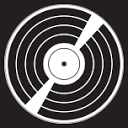
 Sound Cloud
Sound Cloud  All Music •
All Music •  Album of the Year (80%) •
Album of the Year (80%) •  Discogs •
Discogs •  FaceBook •
FaceBook •  Freebase •
Freebase •  Music Brainz •
Music Brainz •  Rate Your Music (3.50 / 5) •
Rate Your Music (3.50 / 5) •  WikiData •
WikiData •  Wikipedia
Wikipedia  Prog Archives
Prog Archives 
 Sound Cloud
Sound Cloud  All Music •
All Music •  Album of the Year (80%) •
Album of the Year (80%) •  Discogs •
Discogs •  FaceBook •
FaceBook •  Freebase •
Freebase •  Music Brainz •
Music Brainz •  Rate Your Music (3.50 / 5) •
Rate Your Music (3.50 / 5) •  WikiData •
WikiData •  Wikipedia
Wikipedia  Prog Archives
Prog Archives Continuing to work with Conny Plank, who once again provides a compelling job as producer and engineer, Kraftwerk went right ahead and named their new album after their two remaining members – an understandable enough move. Like the first two albums, Ralf and Florian still has not seen official re-release, for all that one can practically taste Kraftwerk’s leap into the beyond on it. Given that this was the last album before the most famous lineup was formed and Autobahn was released, it’s appropriate to listen to Ralf and Florian as a harbinger for the future, though perhaps all too easy. Take it on its own terms – a further investigation of electronic possibilities in a more open-ended, less constantly structured fashion than would be the case later – and Ralf and Florian becomes most enjoyable.
“Kristallo” certainly shows how Kraftwerk was right on the verge – various sequencer-driven rhythms and pulses provide the bed for what sounds like a free-flowing harpsichord solo or its near equivalent. “Tanzmusik,” meanwhile, captures the sheer sense of beauty often present in the band’s glory days, complete with what sounds like celebratory handclaps and bells, though crucially lacking the elegant melancholy that gave later songs total heft. “Tongebirge” is another one of the tracks that shows Kraftwerk right on the cusp of future changes, Schneider’s swirling, lovely flute performance further treated with reverb and flange, while Hütter adds some immediately familiar (from later albums) synth tones.
There’s still no core rhythm or melody, though, the immediate distinction between this era of the band and the later one. Parts of the lovely, piano/flute-led “Heimatklänge,” meanwhile, suggest some of David Sylvian’s early instrumental solo work in its sweet appeal. Another hint of the future appears with the final song, thanks to the electronically distorted opening vocals chanting the title of “Ananas Symphonie.” The inclusion of what sounds like steel guitar and banjo at the end is something else again.